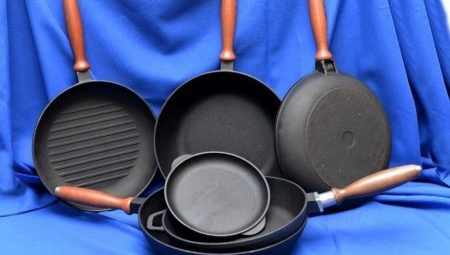Cast iron pans have not lost their popularity for many years, despite the emergence of new types of coatings for dishes. Popularity is due to the high quality of the material and ease of use.
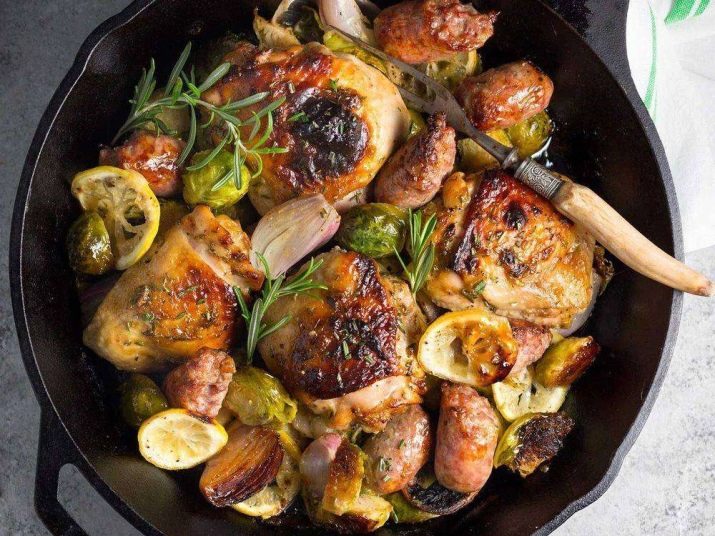
However, it should be remembered that the taste characteristics of the prepared dishes, as well as the longevity of the pan, largely depend on the care of it.
Material Features
Cast iron is an alloy of iron with carbon and other carbon-containing substances. Heating of the material occurs evenly.

Due to this property, it is convenient to cook food in cast-iron dishes, since heat will pass into the products with the same intensity.
Another advantage of cast iron pans is that they are suitable for all types of stoves.
Such dishes can also be put in the oven, provided that the handle is made of heat-resistant material or is removable. Cast iron maintains temperature for quite some time, and therefore food in such utensils remains hot under the lid for a long time.
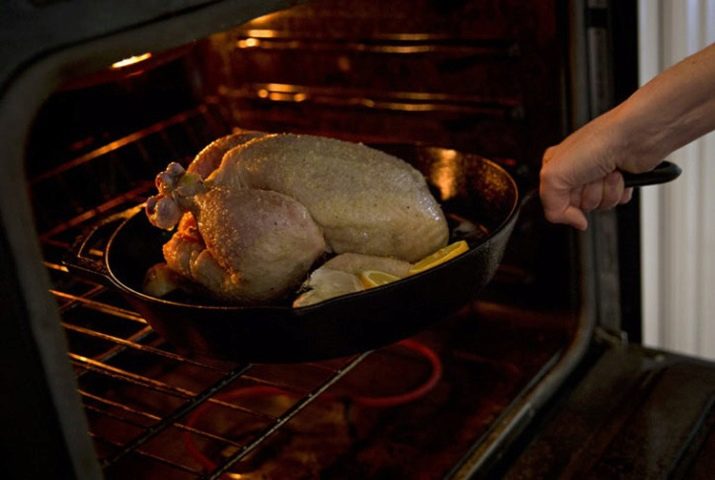
However, such material has its drawbacks. First of all, this is a rather high weight, which in some way can complicate the cooking process.
Cast iron pans are available with or without a special coating.
Uncoated utensils can quickly rust if improperly maintained and used.

As for the coating, it often begins to crack. The material is characterized by high porosity, and therefore has the ability to absorb aromas and preserve them for a long time. For this reason, it is recommended that after cooking, transfer it to another container for storage.
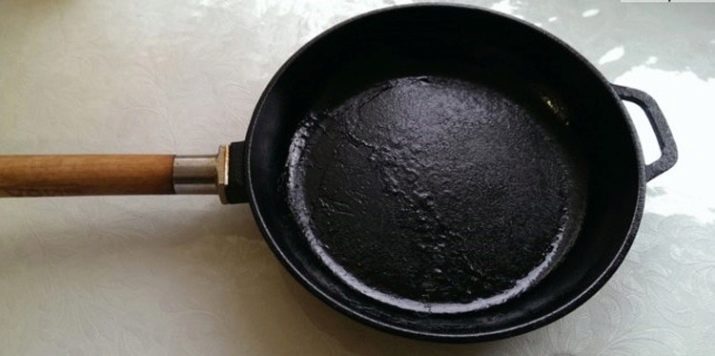
Despite the fact that cast iron is heavy and visually seems durable, in fact it is a brittle material. Use the pan from it quite carefully, as from a hit or a fall it can crack
Preparing new dishes for use
The process of preparing a new cast-iron frying pan for further use depends on its type. If the dishes have a protective non-stick coating, you just need to wash the product well with a dishwashing gel. To do this, it is best to use a soft sponge.
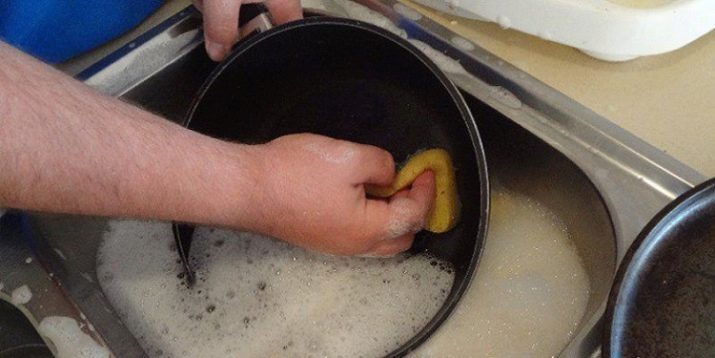
Brushing is not recommended.
If an uncoated pan was purchased, then in this case, the process of preparing for use will be more difficult. The essence of the preparation is the formation of a non-stick layer.
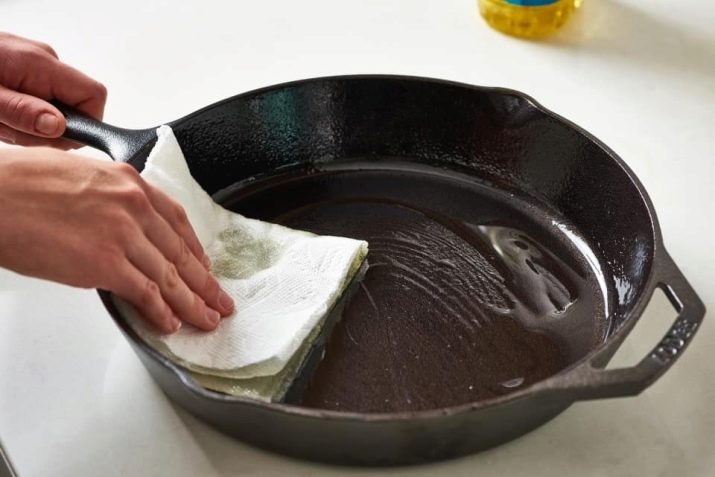
Since manufacturers rub iron with special products and oils for better storage, the dishes must be thoroughly rinsed first.
Dishwashing liquid and a soft sponge are also used for washing.
After cleaning the surface, wipe it well with a dry cloth using any soft cloth. To give the product non-stick properties, it is necessary to clog the pores and calcine the cast iron well.
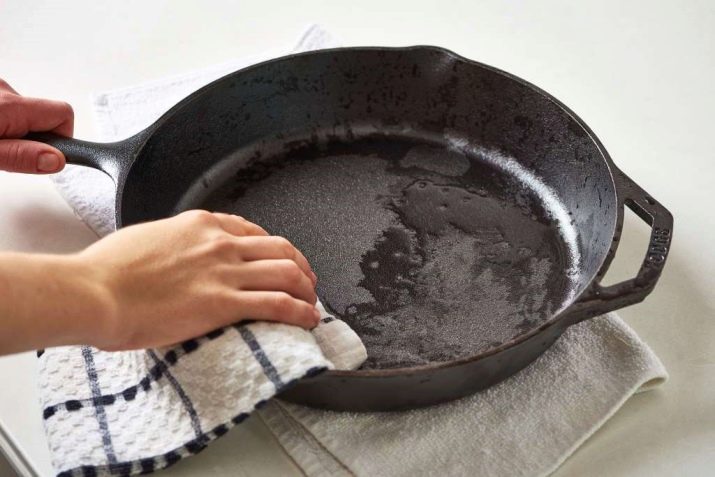
To properly heat cast iron, there are several methods.
- If the handle in the pan is also made of heat-resistant material or is removable, you can glow the product over an open fire. This is most conveniently done on the grill by installing the product on a grill. At the very beginning of incandescent smoke should go black, and the surface of the dishes will change color. After some time, there will be no dark spots on the cast iron. At this point, remove the pan from the wire rack, cool and wash off the soot.
- An oven can be used for calcination (provided that the handle is removed from the pan or it is made of heat-resistant material). The oven is preheated to 200 °, and then cast-iron utensils are placed in it. During the calcination process, dark gray smoke will flow from the oven. After 3 hours, the smoke should disappear, which will be a signal of the need to complete the procedure. The pan is cooled and washed under a stream of water at room temperature, after which moisture is removed from the surface with a soft cloth.
- To calcine the dishes on the stove, salt is poured into it to the very edge of the walls and put on a strong fire. Salt must be constantly stirred with a wooden spatula and periodically pour a new one. After about an hour, the white crystals should appear a brown tint, after which the procedure can be completed. The pan is cooled, washed well and wiped dry.
The burnt and dried product must be additionally treated with oil or grease.

The inner surface of the dishes is rubbed with margarine or melted animal fat. It is advisable to re-glow the product on the stove, but not more than 20 minutes.
After heating, the excess oil is drained, and the cooled surface is wiped with a soft cloth.
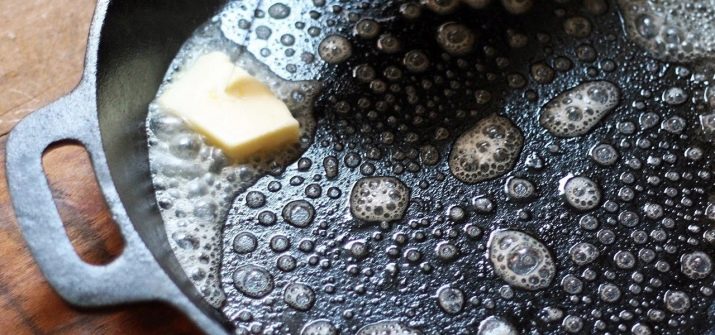
It is worth considering that after heating and polishing the pan, the surface will acquire a brown hue, but over time the material will become completely black. Artificially created coating will prevent the burning of food, as well as significantly increase the life of utensils.
How to upgrade an old pan?
During operation, the characteristics of the cast iron pan may deteriorate. Most often there are problems with the fact that the food darkens during cooking or sticks to the dishes.

You can reanimate the product in the same way that was used to prepare the pan for use.
The restoration of dishes occurs due to repeated calcination, after which the surface is rubbed with oil and heated again.
Thus, the non-stick layer is restored.
A rather thick layer of fat may accumulate on the walls of the dishes over time. To remove it, put three large spoons of fine salt and a teaspoon of vinegar into the pan.The contents are poured with warm water, mixed and put the dishes on fire.
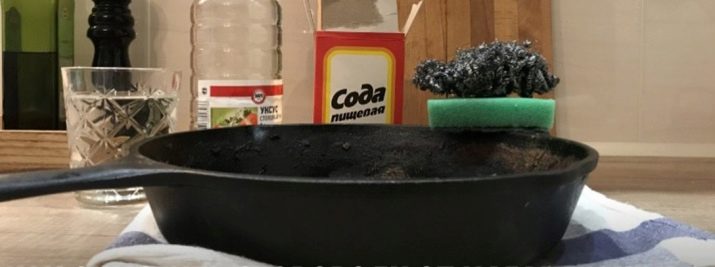
After boiling in a pan, you need to pour 4 large tablespoons of soda. At this stage, you need to be very careful not to get a burn from the vapors released after the chemical reaction. The contents of the pan should boil completely, after which it is washed in warm water and dried.
In the presence of strong pollution or rust it is possible to polish a surface with an iron brush.
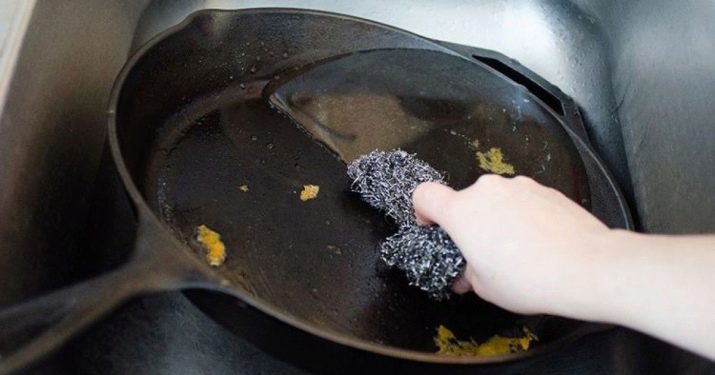
After this procedure, be sure to wipe the dishes with oil. During operation, carbon deposits accumulate on cast iron. For cleaning, you can use special household cleaning products, following the instructions on the packaging.
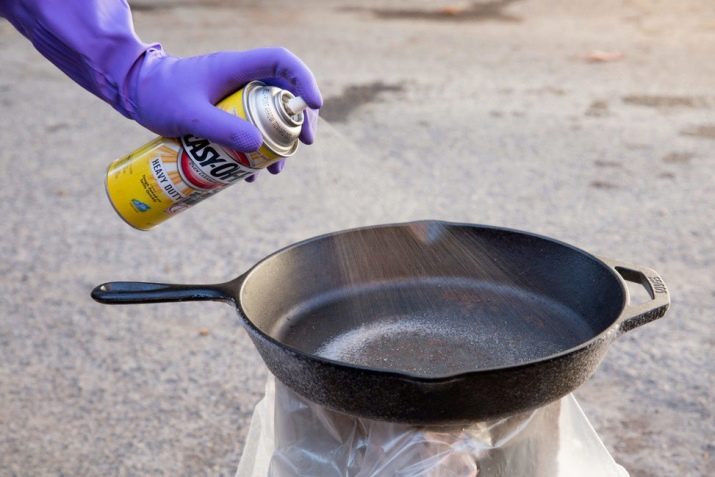
You can also put the pan in vinegar essence and leave it to soak for a couple of days.
If it is necessary to remove the old layer of dirt from the outside, then the dishes are calcined over an open fire or in the oven.
After firing, soot can be cleaned with a knife. After the procedure, it is necessary to restore the artificial non-stick layer by glowing the surface and rubbing with oil.
How to care?
Daily maintenance of cast iron utensils is very important, since it ensures the durability of the product. Cast iron pans without additional coating are subject to corrosion. To prevent rust, empty clean dishes must be periodically heated on the stove.
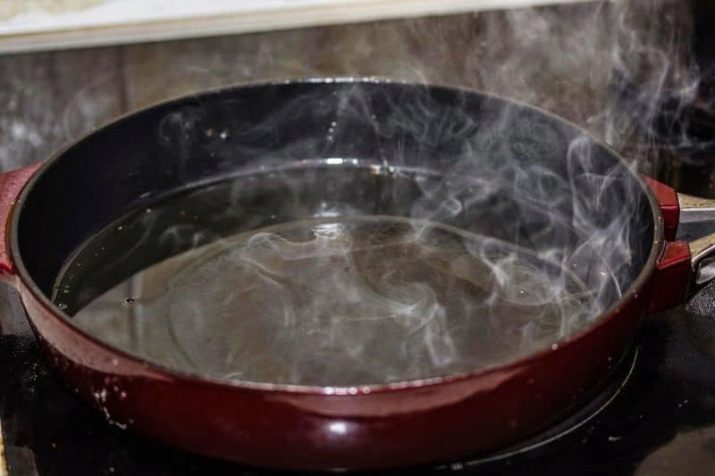
After washing such products, it is important to wipe them thoroughly. To completely remove moisture, it is advisable to dry the pan on a stove over low heat for several minutes.
It is advisable to wash dishes from cast iron immediately after cooking.
Otherwise, the smells are quickly absorbed into the material, which will not have the best effect on the taste characteristics of dishes that will be prepared later.
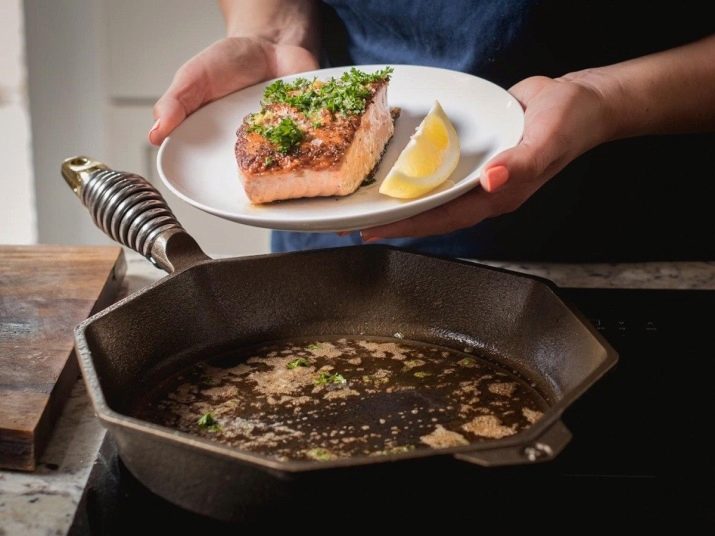
You can’t store the cooked dish in such dishes, as the products may darken.
To clean the product, it is not recommended to use abrasive compounds and metal brushes, as they can ruin the coating.
And also it is undesirable to use standard dishwashing detergents. It is best to wash cast iron products with soapy water or ordinary warm water.
Using a dishwasher to clean a cast iron pan is also not recommended.

Too hot water and cleaning chemicals will quickly spoil a natural or artificially created non-stick coating. And also the likelihood of corrosion processes.
Cast iron pans must be kept in a dry place.
If the humidity is high, the product may rust. And also in a place of storage there should not be extraneous smells. Otherwise, the material easily absorbs them.
You can find out how to properly care for a cast-iron pan from the video.
